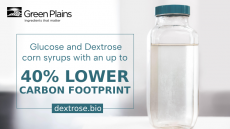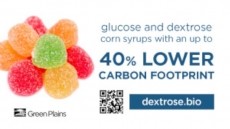How to reduce sugar scientifically and creatively in confectionery

The targets released by Public Health England at the end of March are the latest installment in the sugar reduction story and are challenging the confectionery industry to reduce sugar in key product categories. Obviously decreasing portion size is one approach but reformulating a recipe to reduce its sugar is another option. Just take out the sugar, yes?
In reality it is much more complex than this. Even quite small reductions in sugar can have a noticeable impact on sweetness, as is evidenced in consumer tasting trials.
Sensory profiling
Besides sweetness, sugar contributes other properties to confectionery products. These include preservative qualities (which may impact shelf-life), bulk, texture, visual appeal and aeration in some products.Sensory perception testing of biscuits, sweets and chocolate elicits descriptions such as “crunchy”, “crispy”, “gooey”, “shiny”, “velvety” and “chewy” all of which may be impacted by changes in the formulation of the product.
Mapping out how the underlying scientific blueprint of a product creates its sensory profile is crucial to carry out reformulation efficiently and successfully – resulting in happy consumers.
Natural sugar replacers and sweeteners
So what choices do confectionery providers have? Sugar replacement is one option. However, whilst natural ingredients such as honey could be used, they don’t reduce the total sugars in the product.
Therefore, non-sugar sweeteners may be considered. Polyols, (sugar alcohols), are bulk sweeteners with a calorific value lower than that of carbohydrate sugars. So, they can be used to achieve a significant reduction in calorie content in products, regulation permitting.
Intense sweeteners from natural sources, such as stevia (steviol glycosides) and thaumatin, are generally more favored by consumers but have an unwanted lingering aftertaste.
Fibers and dextrins
Soluble dietary fibers and dextrins (inulin, oligofructose, polydextrose) are commonly used to replace sugars and achieve a reduction in calories. These ingredients provide bulk and can have the added benefit of improving nutritional content by increasing the dietary fiber in products.
Ultimately manufacturers need to become master blenders. In many cases, the optimum product properties are derived from a combination of different approaches, including the use of a blend of sweetening agents.
For example, polyols are generally less sweet than sucrose and are often used in combination with high-intensity sweeteners that have little or no calorific value to create the desired level of sweetness.
However, these sugar replacements often have a negative impact on the textural and flavour properties of products. Scientific understanding of these changes is required to progress the properties of sweetener products towards those of sugar products.
Vanilla and the perception of sweetness
Finally, there is a markedly different approach recently being exploited in sensory science. It involves use of other flavors, colors or smells associated with sweetness. Trials have identified that vanilla added to food can increase perception of sweetness, as can certain colors (red for example) and product shapes.
So although the target set by PHE are definitely a challenge to the industry, there are options open to manufacturers.
Scientific approaches to reformulation can help control risk and cost by reducing the number of iterative steps required to arrive at a successful product.
Creative development that combines sensory science and food science is anticipated over the next few years as manufacturers look to continue to delight consumers whilst presenting healthier options.


















